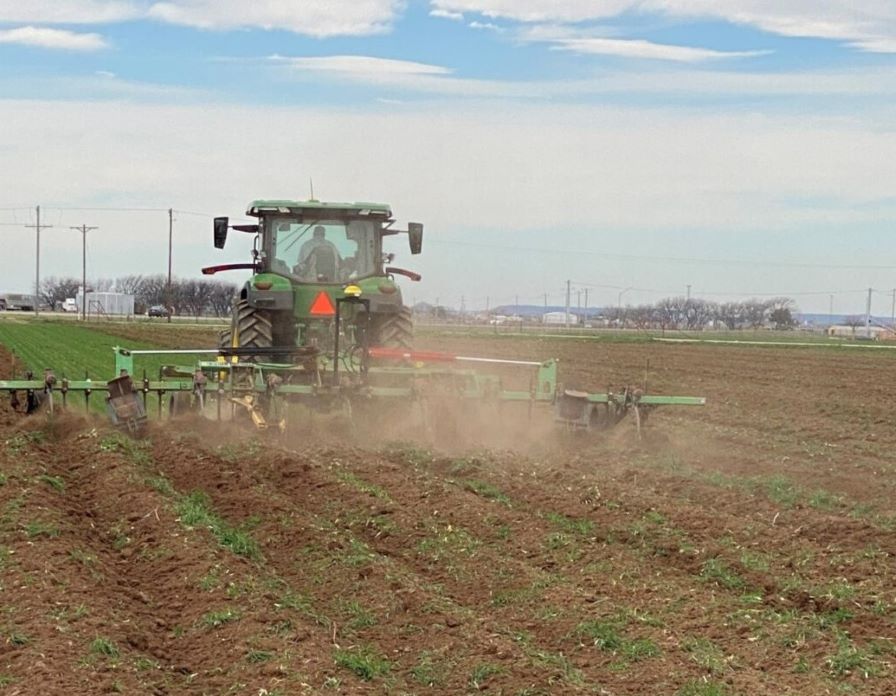Cleveland: Chinese Program Providing Market Stability, Price Boost
Cotton prices continued to advance, but found difficulty in surpassing the 64-cent level.
Fundamentals were the major player in the price advance and it is always market fundamentals that lead to any lasting market movement. That said, technicals are very important, and I am usually wrong when I bet against them.
Beside fundamentals, the plus side of the two-week rally was favorable short-term technical, despite the longer technicals pointing lower. Yet, the long-term view is almost neutral.
New York and the Chinese futures are interlocked. Thus, New York had to follow Chinese prices higher. There could even be a little bit of the upside yet to come, but New York has performed about as well as could be expected. Granted, the fundamentals were supported by short covering, but the official Chinese announcement was true to the “pre-announcements” and provided the base for the uptick in prices.
The Chinese program offers market stability. Price support should be at 60-61 cents, with resistance stacked in between 64-65.50 cents. Trading activity continues to fall within a narrow range. That will last until Mother Nature shows a few of her cards. In that regard, the El Nino is being particularly bitter as it comes to an end.
Export sales have not fallen out of bed, and that is positive. But, business does appear thin at present. The concern is that cash basis levels weakened as futures moved higher – a clear signal the market was beginning to run ahead of demand and running out of steam. Better days should be expected, but again, the market is in the very early stages of estimating (guessing) what the 2016 crop will look like.
Returning to old crop fundamentals, the industry is beginning to understand that the Indian crop, as previously suggested, was a failure. It was much less than forecast by USDA…the 2015 monsoon season was at a 100-200 year collapse.
Weekly export sales were a net of 117,900 RB, including 104,800 RB of upland and 13,100 RB of Pima. Sales for the 2016-17 marketing year were 21,100 RB and represent a continuing expectation by textile mills that New York will remain well below 70 cents in 2017. Remember, textile mills are always bearish prices, just as growers are always bullish.
Shipments continue to remain strong and support the mills’ need for immediate inventory. Exports totaled 211,400 RB, with upland accounting for 200,200 RB – a stronger pace than needed to meet the April USDA export estimate for the 2015-16 marketing season.
USDA models appear to fade late season shipments based on historical activity. However, recent years have taught the market to recognize mill inventory management practices that require stronger late season shipments. Highlighting weekly export destinations were China, Pakistan, Vietnam, Brazil and Indonesia.
U.S. planting progress is on schedule. The West is near half planted, while cool night time temperatures have the other regions on hold. Yet, it is just beginning the fourth week in April. The Coastal Bend has seen flooding, and corn planting in the Delta states is behind schedule. The late Delta corn planting bodes well for cotton, but corn planting did have a better than expected week.
Thus, the U.S. crop remains much on historical schedule. Growers continue to suggest they will plant more cotton acreage than the 9.6 million acres projected in USDA’s March plantings intentions report.
Prices, as stated, will hold within the narrow, somewhat-expanded 60-66 cent trading range as we move through the planting season. Recent prices below 60 cents and even current prices are making cotton competitive. Thus, demand has seen a minor uptick. The U.S. will find a home for the larger crop expected this season.
While our Texas brothers hoist (or hide) the Polyester Cup rightfully won on the baseball battlefield, there continues much confusion, misrepresentation and incorrect quoting surrounding Adidas, BCI, e3, and just about anything worth saying or even worthless of saying.
This morning, I was awakened by a grower telling me a cotton industry official told him not worry about paying for BCI certification, commenting that the “merchant would pay the cost.” We had a great laugh – not at the merchants’ expense, as some of those skunks are actually good friends and they have an important function in the industry. Rather that the industry representative that made the comment failed to understand that the cotton grower pays the cost of everything.
Now, there is tremendous value added to the grower’s efforts by others. However, the cotton grower, the dirt farmer, the low man on the pole, pays for everything up to spinning – industry salaries, cheap wines and fine wines, and the imported water, to boot. The wine I buy, everyone’s everything, fun money, my necessities, taxes. EVERYTHING.
The extra value added by others, for the most part, is paid by consumers. The merchants don’t pay “nothing.” They get paid.
Consumers, at one point, loved cotton. Do not further abdicate the crown jewels of The Fabric of Our Lives. Cotton does not have to be hated. Cotton is not the non-sustaining, resource wasting, chemical dumping, water hog that some of Adidas’ fellow BCI founders project.
I make mistakes and will continue. However, I am not ashamed of speaking out for the cotton grower. When I make mistakes, hold my feet to the fire and see that I correct them. When industry representatives make mistakes, hold their feet to the fire. Yet, require them to represent you, not the other side.
The cotton industry is great because the growers are great. Give them their due.
Give a gift of cotton today.









